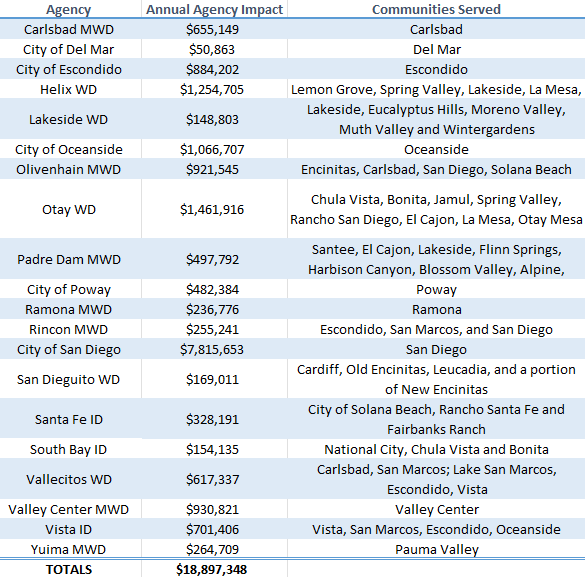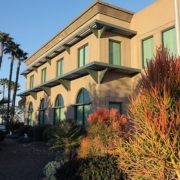Updated figures released July 3 show that disadvantaged communities, working families, farmers, and others across San Diego County will be forced to pay nearly $200 million more over the next decade for water service unless agencies seeking to leave the San Diego County Water Authority are required to fully cover their costs.
On July 10, the San Diego Local Agency Formation Commission’s board is expected to vote on a plan for the Fallbrook and Rainbow water agencies to leave the Water Authority, possibly with the inclusion of an “exit fee.” However, LAFCO’s figures are based on years-old data and flawed projections that understate the annual costs of detachment by at least 50%. Like everything else, costs related to water supplies have inflated significantly over the past three years.
LAFCO decision and data
LAFCO’s data don’t reflect the inflationary realities or the fact that the financial impacts of detachment will continue far beyond LAFCO’s five-year horizon, which does not reflect the actual lifespan of water infrastructure or the debt used to finance it. The LAFCO staff report acknowledges impacts will continue far longer than five years, suggesting that the rest of the county should pay for benefits to Rainbow and Fallbrook.
“From the start of this process, one of our top priorities was making sure that residents across the region aren’t harmed financially. It’s critical that ratepayers who are struggling to make ends meet, independent farmers, and small businesses aren’t forced to subsidize Fallbrook and Rainbow for years to come,” said Water Authority Board Chair Mel Katz. “We encourage the LAFCO Commissioners to require Fallbrook and Rainbow to fully cover their costs.”
LAFCO’s staff recommendation to approve the detachment proposals by the Fallbrook and Rainbow water agencies does not include substantive analysis of impacts to disadvantaged communities, or to agriculture in the Water Authority service area. Nor does it include environmental analysis required by law.
The LAFCO staff recommendation includes an exit fee of about $4.8 million a year for five years, which isn’t close to covering the actual costs that will be shifted to residents elsewhere in the county.
Here’s how much retail water agencies in the region may have to pay each year to cover the projected $18.9 million bill from Fallbrook and Rainbow leaving:

(Editor’s Note: The San Diego County Water Authority response to the proposals by the Fallbrook and Rainbow water districts to leave the Water Authority and annex into the Eastern Municipal Water District in Riverside County addressed the wholesale water agency’s concerns in September 2020. San Diego LAFCO’s website provides addtional details on the detachment process.)




